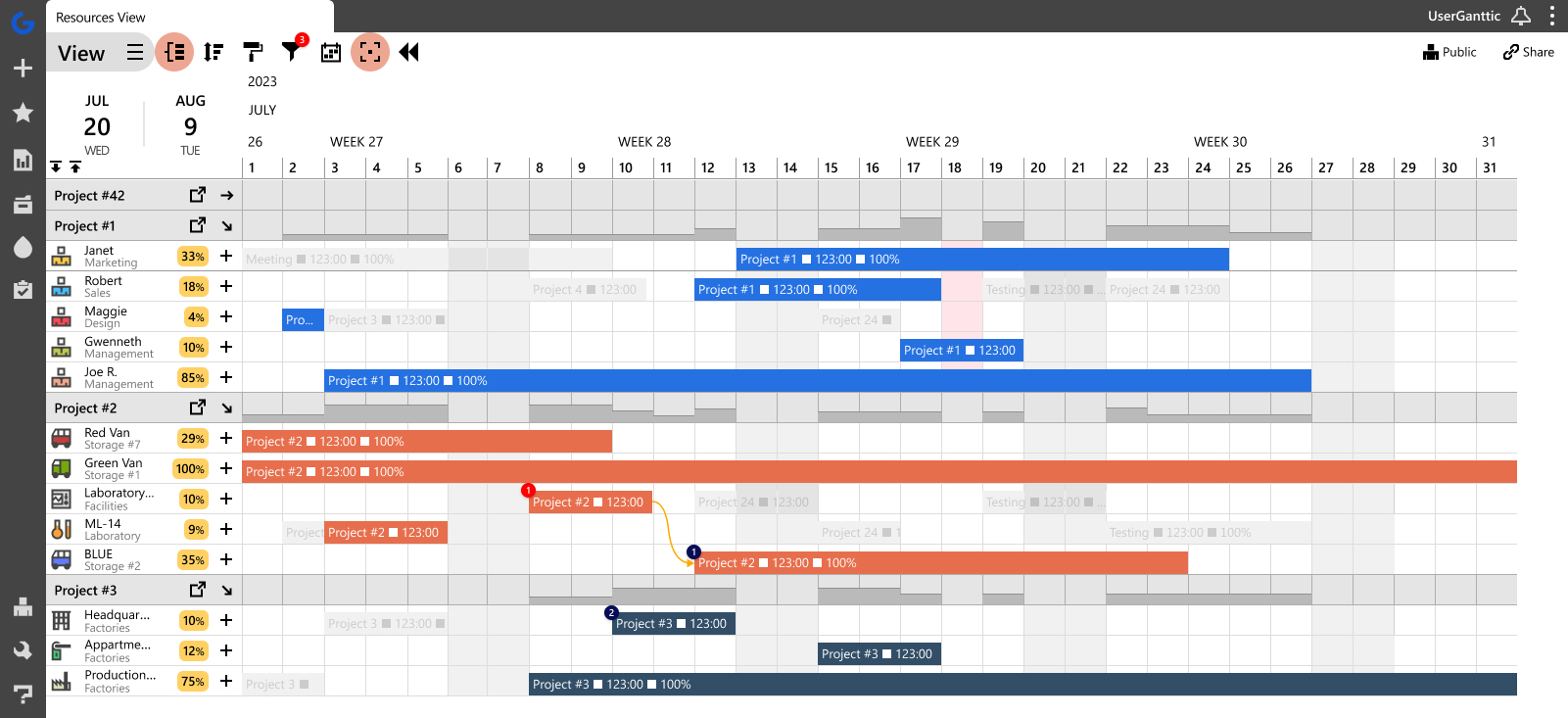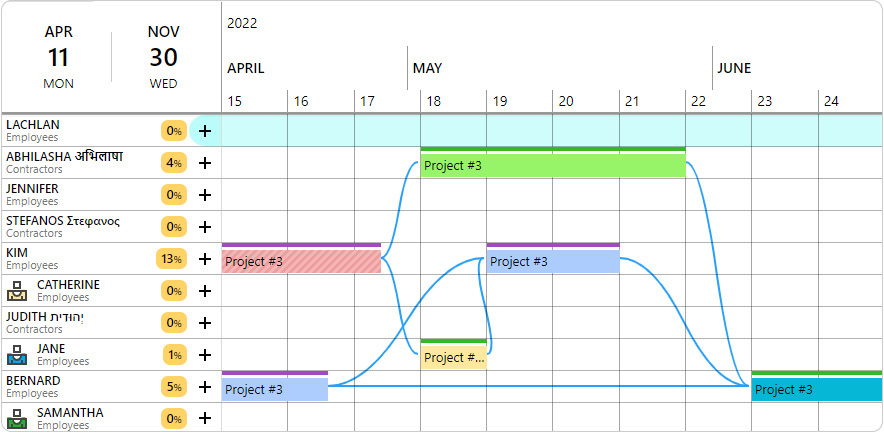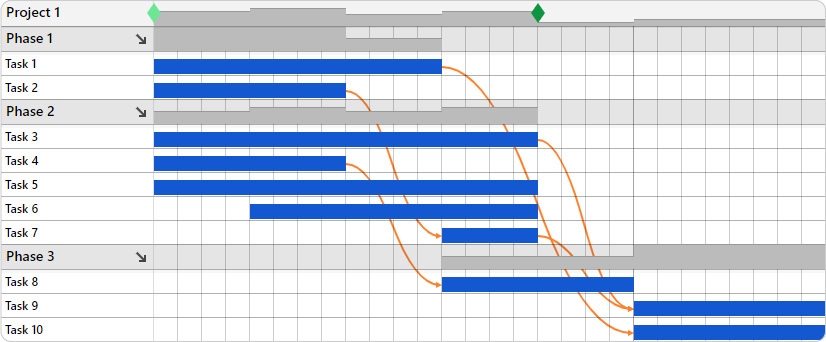Managing one project can be a daunting task, even more so is managing multiple projects simultaneously. Even professional project managers and team leaders are horrified by managing big or numerous projects without project management tools and strategies. Dealing with a workforce, deadlines, budget, tasks, resources, stakeholders, and challenges of a project demands a lot of skill and experience.
A company that can afford the extra budget to hire professional project managers can somehow breeze through these problems, but small organizations don’t have such capacity but are expected to juggle multiple projects with limited manpower.
Big or small, professional or not, managing multiple projects requires skills, experience, and the right strategies to keep the workload efficiently and effectively working.
Strategies to manage multiple projects
There are many ways to manage multiple projects on your plate, and many of them are basic management practices we just need to exercise regularly:
Make a project plan
The first step for an effective project is to make a plan. Without a plan on the table, you’re most likely shaking the most basic foundation of a project without a defined process, expectations, and end goal. Whether it’s your first project or another project added to your already long list of tasks, make sure your plans are laid out and in place.
A project plan can be as simple as a document outlining all the tasks, or it can be visual. For example, a Gantt chart can be a complete project plan.
Making a plan includes, but is not limited to:
- Defining project goals and objectives
- Defining project scope
- Outlining project workflow
- Assembling team members and creating a resource plan
- Determining budget
- Allocation of resources
- Creating an effective project schedule
- Determining a tentative project end date
According to Anthony Martin, Founder and CEO of Choice Mutual, “Most of the time, the first thing that suffers when plans aren’t made, or poorly made, is that budgets go out of hand instantaneously. For example, if you have no plans on what and how much to spend on which project, you’re most likely wasting your resources on things that aren’t even necessary or beneficial at the moment.”
Learn what to prioritize
Learning to prioritize is one of the most fundamental processes in project management. However, it is essential to note that prioritization isn’t as simple as picking cherries off a tree. You need to identify what project is the most urgent and which task on that urgent project requires urgent action.
If you have multiple projects on hand, remember to take note of the following when deciding what or how to prioritize projects and tasks:
- Identify which projects are close to the deadline
- Figure out which projects have a significant impact on business organization
- See which tasks can be done quickly
- Identify which repetitive tasks across all projects can be done together
- Look for available resources in these given time periods
While it is tempting to start and finish easy tasks quickly, most of these easy tasks come in bulk and may take up a lot of your time collectively. Remember that communicating with higher management on which projects will significantly impact business operations is the most critical factor in prioritizing tasks.

When you have a portfolio of projects, managing them isn’t easy without a system or a project pipeline management in place, especially with projects that are bigger in scale and those that are branched out and delegated to multiple team members.
Portfolio management through project management tools can be an effective and efficient way to help ensure that all your projects are aligned with your overall business strategy. An effective portfolio management strategy allows you to increase efficiency and reduce project risks at an overarching level.
At the same time, management tools at a project level help project managers keep track of team assignments, tasks, delegation, and collaboration between team members, overview of project goals and budgets, and track project completion.
There are already many project management tools out in the market, and it is best to choose one that suits your specific needs, customizability, and budget.
Divide and conquer
In the realm of project management, the importance to divide a project portfolio into different views has become increasingly apparent. And having such a strategic approach can help to enhance organizational efficiency.
By adopting a dual perspective that alternates between resource and project-centric viewpoints, project managers can navigate the intricate web of multiple projects with greater precision.
For example, a resource-centric view focuses on the allocation and optimization of available resources. Ensuring that manpower, finances, and time are better distributed across various activities.
 A resource-centric Gantt chart created in Ganttic shows you tasks and projects from the POV of your workforce.
A resource-centric Gantt chart created in Ganttic shows you tasks and projects from the POV of your workforce.
On the other hand, the project-centric view delves into the unique intricacies and requirements of individual projects, allowing for tailored strategies and more meticulous planning.
 A project-focused view created in Ganttic showcases the project’s work breakdown structure.
A project-focused view created in Ganttic showcases the project’s work breakdown structure.
When confronted with the complexities of managing multiple projects simultaneously, the integration of both resource and project perspectives becomes imperative for holistic control. Remember project management is nothing without a resource plan, so it’s best to employ both when managing multiple projects. By harmonizing both perspectives, project managers can navigate the intricate interplay of resources and projects. And strike a perfect balance for both.
Make adjustments when necessary
Needing changes along the way does not necessarily translate to failure on your projects. Changes and adjustments are necessary to ensure that projects meet goals and deadlines despite external and internal challenges, and project managers and team members need to be flexible about these adjustments.
When challenges come internally, examine where these challenges are coming from and note why adjustments are necessary. Most often, changes in project scope and work schedule are highly likely to affect team morale and efficiency. So it is best to communicate appropriately to team members why these need to happen.
Make sure to assess your projects regularly—either monthly or quarterly—to make sure that necessary adjustments are made immediately. Also ensure that resources are being tracked as needed, rather than having to do them all at once.
Empower and communicate with team members
Managing multiple projects can quickly suck the soul out of your team, especially if the same team members work on several projects simultaneously.
Empowering team members is one of the most important but underrated functions of a team leader and a successful project manager. But how do you empower team members? Believe it or not, it’s more than just giving them words of affirmation. Here’s how you can empower your team and produce successful project results in the long run:
- Build a culture of trust. Trust shouldn’t be easily given, but for a team, trust could just be your most basic foundation. Building a culture of trust means that communication is an open two-way street between you and your team. If you lead by example—showing them that you can strike a balance between the organization’s and the team’s best interests at heart—it will encourage them to follow your lead.
- Delegate tasks. For a team with multiple projects at hand, you should be able to foster a community wherein everyone works hand in hand to finish a task, setting priorities and being open to adjustments and changes when necessary.
- Make a realistic work schedule. Team leaders should always be able to set realistic work schedules for the team to maximize productivity by using employee scheduling techniques.
- Provide them with tools, resources, and technology to work independently and as a team.
- Be open to mistakes. Humans as we are, mistakes can happen. Let your team members know what and why it went wrong, and find an avenue to learn from these mistakes.
Be an effective communicator
The worst thing that can happen in an organization is when the entire internal and external team isn’t aligned about objectives, goals, and expectations.
Along the way, significant changes can happen to your projects, which may harm business operations and performance. Project managers must be effective communicators to internal members and external stakeholders to set expectations, provide insight, communicate change and adjustments, and give updates on current workflow and goal changes.
Manage multiple projects seamlessly with Ganttic
Even the most seasoned project managers can only handle so many projects at a time. In a nutshell, the key to managing multiple projects is knowing how to use your resources properly—budget, manpower, management tools, and time—and ensuring that these all seamlessly work together to maximize efficiency among the team and effectiveness of work processes.
If you want to achieve more for your 2024 portfolio, then it’s time to start gaining the advantage. Ganttic empowers you to optimize resource allocation, ensuring every task aligns with your strategic goals. With its real-time collaboration features and drag-and-drop simplicity, Ganttic transforms complexity into clarity, letting you navigate the intricate web of projects with finesse. Say goodbye to project pandemonium and embrace the simplicity of Ganttic – where managing multiple projects becomes a breeze.
Sign up for a personal demo to learn more. Or try out our software for free.